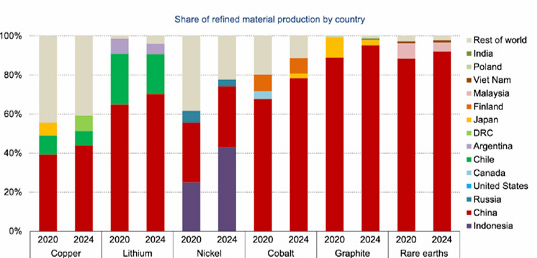Report published by the Council on Strategic Risks, August 2025.
Japan’s evolving security doctrine emphasizes resilience and self-reliance in response to the growing challenges from China, Russia, North Korea and the uncertainties in its alliances. Within this context, energy policy becomes a central pillar of national security. This report highlights that accelerating renewable energy is not only feasible but also strategically advantageous, enabling Japan to achieve both economic and security goals simultaneously.
The strategic energy landscape:
Japan remains one of the world’s most import-dependent nations, sourcing 87% of its total energy entirely via maritime routes. While some progress has been made, Japan still lacks a detailed net-zero roadmap, has set no coal phase-out date, and continues to hedge with LNG and other costly low-carbon options.
Pathways for transition:

Government targets envision 36-38% renewables by 2030 and 40-50% by 2040. In contrast, modelling by the Lawrence Berkeley National Laboratory (LBNL) shows a 70% renewable electricity system is achievable by 2035, with 20% nuclear and 10% gas, provided coal is phased out and new gas plants are avoided. This pathway is economically favourable as new investments in renewables, storage, and transmission are cheaper than operating fossil fuel plants. Such a shift would reduce fossil import costs by roughly 85%, enhance independence, cut pollution and secure reliable supply.
Security implications:
The national security benefits of faster renewable deployment are multi-fold.
First, supply security improves as reliance on vulnerable maritime chokepoints diminishes.
Second, defence readiness strengthens. Diversified and localized generation enhances the resilience of Self Defence Forces installations and disaster response capacities. Importantly, lower fossil costs free significant fiscal space for defence procurement and readiness.
Third, diplomatic and economic autonomy expands. A cleaner energy mix reduces the need to accommodate fossil fuel suppliers or navigate energy-linked crises.
Finally, cyber resilience improves. A distributed, digitally designed clean energy system can be built with segmentation and security from inception, unlike centralized fossil supply chains.
Challenges to address:
Despite these advantages, challenges remain. China dominates clean-energy supply chains and critical minerals, raising security and cyber concerns. Japan is already diversifying sources and can invest in refining capacity with trusted partners. Hardware lifespans of 20-30 years reduce exposure to frequent supply shocks, while technological innovation is decreasing material intensity. Policymakers must distinguish between relatively low-risk technologies, such as solar panels, and more connected assets like virtual power plants, applying proportionate scrutiny.

Domestically, energy governance is fragmented. The Ministry of Economy, Trade and Industry dominates decisions, while defence and diplomatic costs of fossil reliance remain undervalued.
Recommendations:
- Integrate security considerations into energy policy by establishing mechanisms for joint planning between energy, defence, and foreign ministries.
- Build energy literacy in security institutions to strengthen resilience at military bases and reallocate savings from reduced imports toward defence readiness.
- Elevate renewable deployment to a national security priority through Prime Ministerial and Cabinet leadership, embedding ambitious targets in the upcoming Strategic Energy Plan.
- Institutionalize climate-security risk analysis to assess threats to fossil supply chains and integrate findings into policymaking.
- Focus on high-risk supply chain and cyber vulnerabilities while ensuring they do not stall the broader transition.
According to the report renewable energy is not a trade-off between environmental goals and security. Rather, it offers Japan a path toward greater resilience, autonomy, and strategic strength. By accelerating renewables, Japan can simultaneously reduce economic risks, strengthen its defence posture, and gain diplomatic flexibility in an increasingly volatile international landscape.
This text is based on extracts from a report written by Caroline Baxter, Lily Boland, Tom Ellison and Noah Fritzhand , August 2025. To read the complete report, follow the link here.
See below for our coverage on similar topics:
- Towards Green Industrial Partnerships: Reducing Europe’s Energy and Resource Strain
- Fifty Years of Transition: How the U.S. Military Transformed its Estates Energy Strategy
- Impact of Critical Energy Infrastructure Security on Military Resilience and Energy Security within NATO



